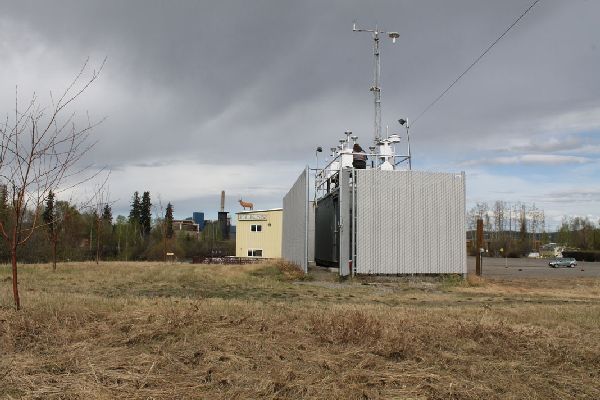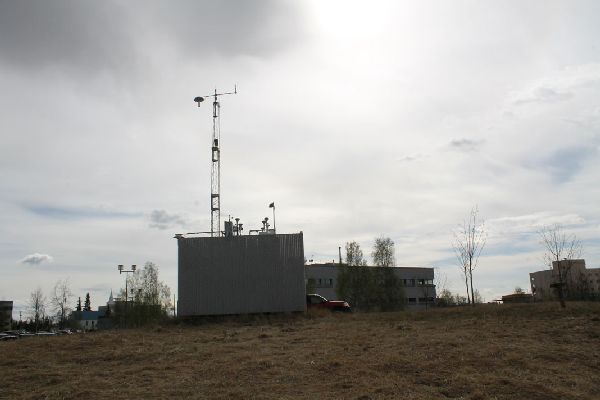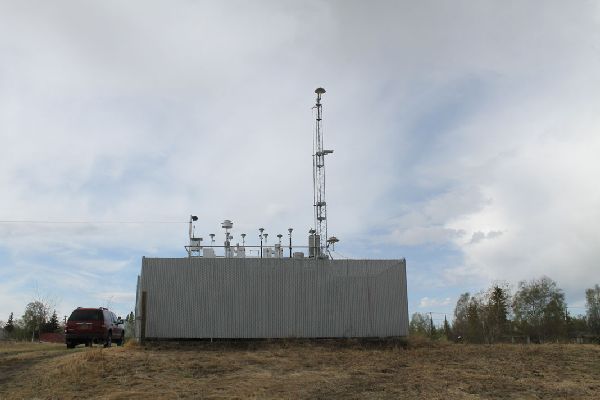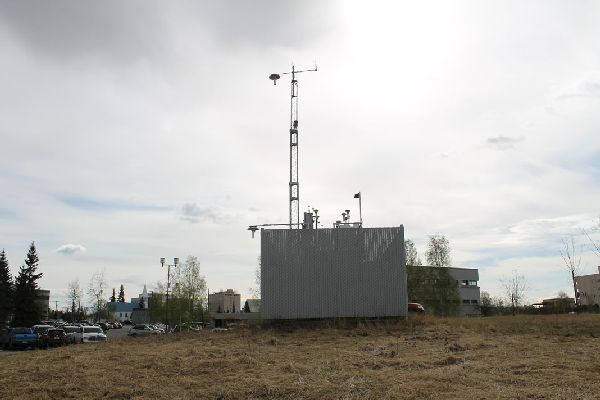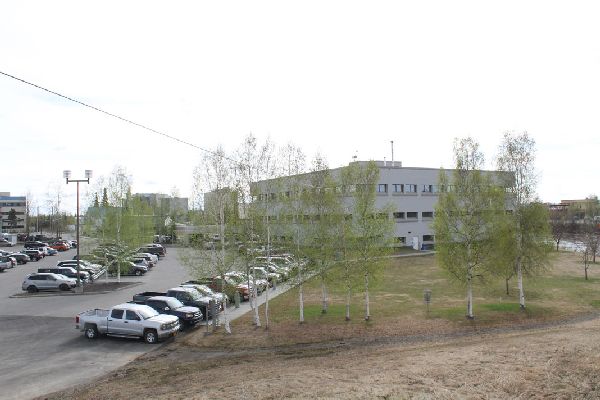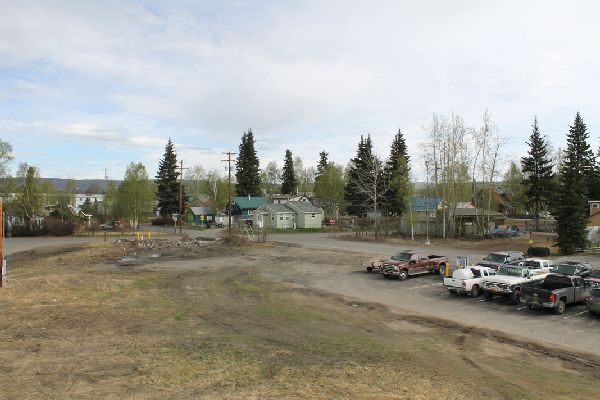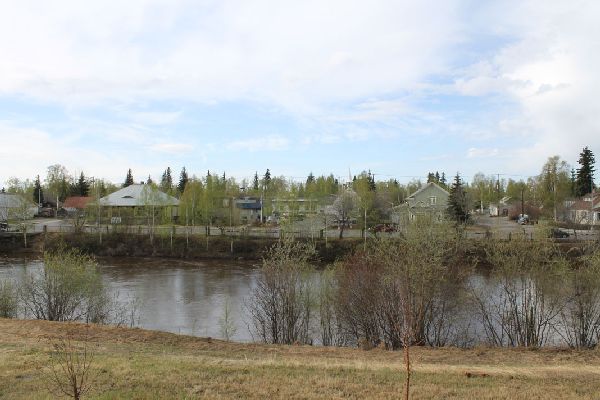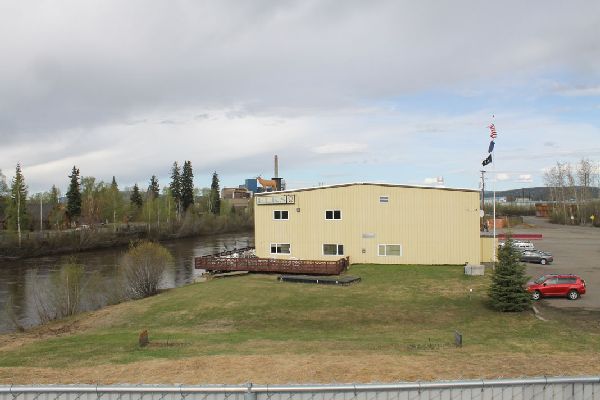NCore Air Quality Monitoring Site
Site Location
Monitoring Siting Criteria for the NCore Air Quality Monitoring Site
Introduction
The Code of Federal Regulation Title 40 Part 58 covers Ambient Air Quality Surveillance. Appendix E to Part 58—Probe and Monitoring Path Siting Criteria for Ambient Air Quality Monitoring contains specific location criteria applicable to State and Local Air Monitoring Stations (SLAMS) ambient air quality monitoring probes and inlets. These siting criteria are necessary to ensure the uniform collection of compatible and comparable air quality data. The probe siting criteria discussed in Appendix E must be followed to the greatest extent possible, although there may be situations where some deviation from the siting criteria may be necessary. Specific siting criteria that are phrased with a "must" are defined as requirements and exceptions must be approved through the waiver provisions. However, siting criteria that are phrased with a “should” are defined as goals to meet for consistency but are not requirements.
The NCore site, located on a hill adjacent to the parking lot of the Fairbanks North Star Borough Administrative Center, is Alaska’s National Core Multi-Pollutant Monitoring Station. As part of a nationwide monitoring network, the site monitoring objective for NCore is to gather data on typical background concentrations of PM10, PM2.5, PM10-2.5, carbon monoxide (CO), sulfur dioxide (SO2), ozone (O3), nitric oxide (NO), and reactive nitrogen compounds (NOy). The site consists of continuous PM2.5 and PM10 Met One Beta Attenuation Monitors (BAMs) with particle size selective inlets, as well as PM2.5 and PM10 filter-based Thermo Scientific Partisols (two-2000is and one-2025i), a Teledyne T300U CO analyzer, a Thermo Scientific 43iQ-TL SO2 analyzer, a Teledyne T-200U NOy analyzer, and a Thermo Scientific 49iQ-TL O3 analyzer. Additionally, there are an URG 3000N and a Met One Super SASS monitor that are part of the PM2.5 Chemical Speciation Network (CSN).
Placement and Spacing
The table below has siting criteria as outlined in 40 CFR 58, Appendix E. The criteria were reduced to show only relevant criteria for the site.
Particulate Matter (PM2.5 & PM10)
| Applicable Section | Siting Criteria | Observed |
|---|---|---|
| Horizontal and Vertical Placement | 2-15 meters above ground level for neighborhood or larger spatial scale, 2-7 meters for microscale spatial scale sites and middle spatial scale PM10-2.5 sites. 1 meter vertically or horizontally away from any supporting structure, walls, etc., and away from dusty or dirty areas. If located near the side of a building or wall, then locate on the windward side relative to the prevailing wind direction during the season of highest concentration potential. |
Criteria Met. Neighborhood scale site. Sample inlet is approximately 4.5 meters above ground surface and 1 meter spacing for FRM instruments. No building obstructions. |
| Spacing from Minor Sources | (a) For neighborhood or larger spatial scales avoid placing the monitor near local, minor sources. The source plume should not be allowed to inappropriately impact the air quality data collected at a site. Particulate matter sites should not be located in an unpaved area unless there is vegetative ground cover year-round. |
Criteria Met. Site is approximately 260 meters to Aurora Wood Processing and approximately 400 meters to a coal power plant. |
| Spacing from Obstructions (a) | To avoid scavenging, the inlet must have unrestricted airflow and be located away from obstacles. The separation distance must be at least twice the height that the obstacle protrudes above the probe inlet. |
Criteria Met. No obstacles. Airflow is unrestricted. |
| Spacing from Trees | To reduce possible interference the inlet must be at least 10 meters or further from the drip line of trees. |
Criteria Met. Woody vegetation does not exceed height of sample inlets and nearest dripline is approximately 10 meters from site. |
| Spacing from Roadways | Spacing from roadways is dependent on the spatial scale and ADT count. See 40 CFR 58 Appendix E Section 6.3(b) and Figure E-1 for specific requirements. |
Criteria Met. Site is located approximately 85 meters from a roadway with approximately 4,000 vehicles per day. Site is located approximately 240 meters from an roadway with approximately 10,000 vehicles per day. |
Carbon Monoxide (CO)
| Applicable Section | Siting Criteria | Observed |
|---|---|---|
| Horizontal and Vertical Placement | For neighborhood or larger spatial scale sites the probe must be located 2-15 meters above ground level and must be at least 1 meter vertically or horizontally away from any supporting structure, walls, etc., and away from dusty or dirty areas. If located near the side of a building or wall, then locate on the windward side relative to the prevailing wind direction during the season of highest concentration potential. |
Criteria Met. Sample inlet is approximately 3 meters above ground surface. No building obstructions. |
| Spacing from Minor Sources | For neighborhood or larger spatial scales avoid placing the monitor near local, minor sources. The source plume should not be allowed to inappropriately impact the air quality data collected at a site. Particulate matter sites should not be located in an unpaved area unless there is vegetative ground cover year-round. |
Criteria Met. Site is approximately 260 meters from Aurora Wood Processing and approximately 400 meters from Aurora Energy's coal power plant. |
| Spacing from Obstructions (a) | To avoid scavenging, the inlet must have unrestricted airflow and be located away from obstacles. The separation distance must be at least twice the height that the obstacle protrudes above the probe inlet. |
Criteria Met. No obstacles. |
| Spacing from Obstructions (b) | The inlet must have unrestricted airflow in an arc of at least 180 degrees. This arc must include the predominant wind direction for the season of greatest pollutant concentration potential. For particle sampling, a minimum of 2 meters of separation from walls, parapets, and structures is required for rooftop site placement. |
Criteria Met. Sample inlet has 360-degree airflow availability. |
| Spacing from Trees | To reduce possible interference the inlet must be at least 10 meters or further from the drip line of trees. |
Criteria Met. Woody vegetation does not exceed height of sample inlets and nearest dripline is approximately 10 meters from site. |
| Probe Material & Residence Time (a) | Sampling train material must be FEP Teflon or borosilicate glass (e.g., Pyrex) for reactive gases. |
Criteria Met. Glass and FEP. |
| Probe Material & Residence Time (b) | Sampling probes for reactive gas monitors at NCore must have a sample residence time less than 20 seconds. |
Criteria Met. |
Ozone (O3)
| Applicable Section | Siting Criteria | Observed |
|---|---|---|
| Horizontal and Vertical Placement | 2-15 meters above ground level. 1 meter vertically or horizontally away from any supporting structure, walls, etc., and away from dusty or dirty areas. If located near the side of a building or wall, then locate on the windward side relative to the prevailing wind direction during the season of highest concentration potential. |
Criteria Met. Sample inlet is approximately 3 meters above ground surface and 1 meter spacing for FRMinstruments. No building obstructions. |
| Spacing from Minor Sources (a) | For neighborhood or larger spatial scales avoid placing the monitor near local, minor sources. The source plume should not be allowed to inappropriately impact the air quality data collected at a site. Particulate matter sites should not be located in an unpaved area unless there is vegetative ground cover year-round. |
Criteria Met. Site is approximately 260 meters from Aurora Wood Processing and approximately 400 meters from Aurora Energy's coal power plant. |
| Spacing from Minor Sources (b) | To minimize scavenging effects, the probe inlet must be aqay from furnace or incineration flues or other minor sources of SO2 or NO. |
Criteria Met. No combustion furnace/flues located within 50 meters of the site. |
| Spacing from Obstructions (a) | To avoid scavenging, the inlet must have unrestricted airflow and be located away from obstacles. The separation distance must be at least twice the height that the obstacle protrudes above the probe inlet. |
Criteria Met. No obstacles. |
| Spacing from Obstructions (b) | The probe inlet must have unrestricted airflow in an arc of at least 180 degrees. This arc must include the predominant wind direction for the season of greatest pollutant concentration potential. |
Criteria Met. Sample inlets have 360-degree airflow availability. |
| Spacing from Trees | To reduce possible interference the inlet must be at least 10 meters or further from the drip line of trees. |
Criteria Met. Woody vegetation does not exceed height of sample inlets and nearest dripline is approximately 10 meters from the site. |
| Spacing from Roadways | Spacing from roadways is dependent on the spatial scale and average daily traffic count. See 40 CFR 58 Appendix E Section 6.3(b) and Figure E-1 for specific requirements. |
Criteria Met. |
| Probe Material & Residence Time (a) | Sampling train material must be FEP Teflon or borosilicate glass (e.g., Pyrex). |
Criteria Met. Glass and FEP. |
| Probe Material & Residence Time (b) | Sampling probe for reactive gas monitors at NCore must have a sample residence time less than 20 seconds. |
Criteria Met. |
Sulfur Dioxide (SO2)
| Applicable Section | Siting Criteria | Observed |
|---|---|---|
| Horizontal and Vertical Placement | 2-15 meters above ground level for neighborhood or larger spatial scale, 2-7 meters for microscale spatial scale sites and middle spatial scale PM10-2.5 sites. 1 meter vertically or horizontally away from any supporting structure, walls, etc., and away from dusty or dirty areas. If located near the side of a building or wall, then locate on the windward side relative to the prevailing wind direction during the season of highest concentration potential. |
Criteria Met. Sample inlet is approximately 3 meters above ground surface and 1 meter spacing for FRM instruments. No building obstructions. |
| Spacing from Minor Sources | For neighborhood scale avoid placing the monitor probe inlet near local, minor sources. The source plume should not be allowed to inappropriately impact the air quality data collected at a site. |
Criteria Met. Site is approximately 260 meters from Aurora Wood Processing and approximately 400 meters from Aurora Energy's coal power plant. |
| Spacing from Obstructions (a) | To avoid scavenging, the inlet must have unrestricted airflow and be located away from obstacles. The separation distance must be at least twice the height that the obstacle protrudes above the probe inlet. |
Criteria Met. No obstacles. |
| Spacing from Obstructions (b) | The inlet must have unrestricted airflow in an arc of at least 180 degrees. This arc must include the predominant wind direction for the season of greatest pollutant concentration potential. For particle sampling, a minimum of 2 meters of separation from walls, parapets, and structures is required for rooftop site placement. |
Criteria Met. Inlets have 360-degree airflow availability. |
| Spacing from Trees | To reduce possible interference the inlet must be at least 10 meters or further from the drip line of trees. |
Criteria Met. Woody vegetation does not exceed height of sample inlets and nearest dripline is approximately 10 meters from site shelter. |
| Probe Material & Residence Time (a) | Sampling train material must be FEP Teflon or borosilicate glass (e.g., Pyrex). |
Criteria Met. Glass and FEP. |
| Probe Material & Residence Time (b) | Sampling probe for reactive gas monitors at NCore must have a sample residence time less than 20 seconds. |
Criteria Met. |
Oxides of Nitrogen (NO & NOy)
| Applicable Section | Siting Criteria | Observed |
|---|---|---|
| Horizontal and Vertical Placement | For neighborhood or larger spatial scale sites the probe must be located 2-15 meters above ground level and must be at least 1 meter vertically or horizontally away from any supporting structure, walls, etc., and away from dusty or dirty areas. Microscale near-road NO2 monitoring sites are required to have sampler inlets between 2 and 7 meters above ground level. If located near the side of a building or wall, then locate the sampler probe on the windward side relative to the prevailing wind direction during the season of highest concentration potential. |
Criteria Met. Not a micro-scale site. Sample inlet is approximately 3 meters above ground surface and 1 meter spacing for FRM instruments. |
| Spacing from Minor Sources | For neighborhood scale and larger avoid placing the monitor probe inlet near local, minor sources. The source plume should not be allowed to inappropriately impact the air quality data collected at a site. |
Criteria Met. Site is approximately 260 meters from Aurora Wood Processing and approximately 400 meters from Aurora Energy's coal power plant. |
| Spacing from Obstructions (a) | To avoid scavenging, the probe inlet must have unrestricted airflow and be located away from obstacles. The separation distance must be at least twice the height that the obstacle protrudes above the probe inlet. |
Criteria Met. No obstacles. |
| Spacing from Obstructions (b) | The probe inlet must have unrestricted airflow in an arc of at least 180 degrees. This arc must include the predominant wind direction for the season of greatest pollutant concentration potential. |
Criteria Met. Inlets have 360-degree airflow availability. |
| Spacing from Obstructions (d) | For near-road NO2 monitoring stations, the monitor probe shall have an unobstructed air flow, where no obstacles exist at or above the height of the monitor probe, between the monitor probe and the outside nearest edge of the traffic lanes of the target road segment. |
Criteria Met. Site is approximately 85 meters from a roadway with approximately 4,000 vehicles per day and approximately 240 meters from a roadway with approximately 10,000 vehicles per day. |
| Spacing from Trees | To reduce possible interference the inlet must be at least 10 meters or further from the drip line of trees. |
Criteria Met. Woody vegetation does not exceed height of sample inlets and nearest dripline is approximately 10m from site shelter. |
| Spacing from Roadways | Spacing from roadways is dependent on the spatial scale and average daily traffic count count. See Section 6 and Figure E-1 of 40 CFR Part 58 for specific requirements. |
Criteria Met. |
| Probe Material & Residence Time (a) | Sampling train material must be FEP Teflon or borosilicate glass (e.g., Pyrex). |
Criteria Met. Glass and FEP. |
| Probe Material & Residence Time (c) | Sampling probes for reactive gas monitors at NCore and at NO2 sites must have a sample residence time less than 20 seconds. |
Criteria Met. |

